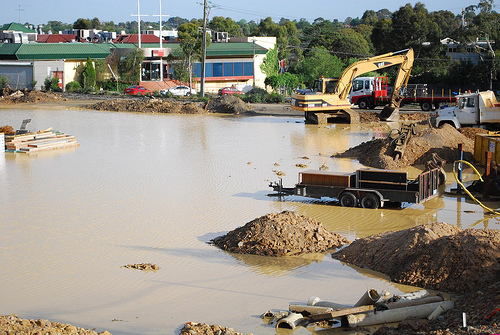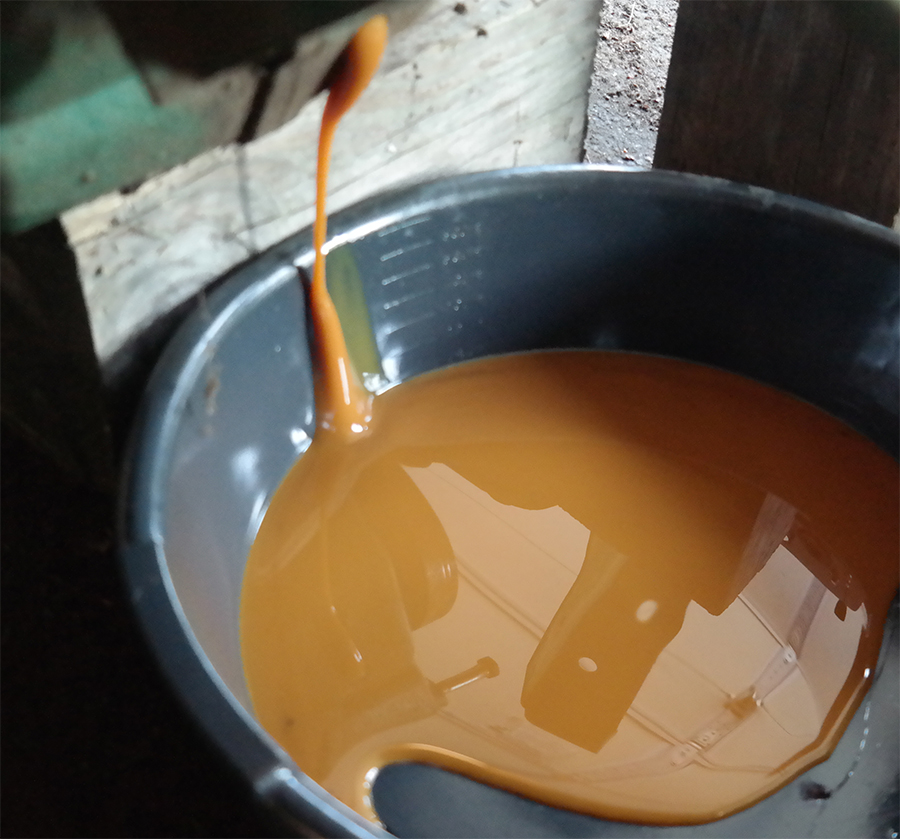Restoring Floodwater Damaged Equipment
Posted by David Schatz, Owner - DHS Equipment on Aug 28th 2017

When flooding subsides and rebuilding begins, victims rely on contractors to be prepared for action, ready to jump on jobs and get work done quickly. A lot of times, contractors fall victim to flooding as well. Equipment can sit underwater for days, sometimes weeks before it can be recovered.
While insurance may help replace equipment damaged by floodwaters, replacement may take longer than expected. In some cases, machinery can be repaired and used immediately, without replacement. Obviously, this depends on the complexity of the machine and the number of electrical components on the machine.
Basic equipment operated by a small engine with limited electrical components can be salvaged in most cases. Equipment that only requires fuel, spark, and air to operate is easily and affordably repairable if you take important steps to restore the machine.
Do not attempt to fix any piece of equipment until you consult your insurance company, as it may void any insurance claim. If you do not plan on filing an insurance claim, here is information that will help you facilitate a floodwater restoration.
Before completing any work using compressed air or dealing with chemicals, make sure to wear safety glasses and appropriate safety gear.
- Drain the gasoline tank. If possible, use compressed air
with a moisture filter to expel water out of the fuel tank. Be careful to not
use too much air pressure while blowing out the fuel tank. Replace the fuel
filter as it may also contain water, especially if the filter has paper pleats.
 Drain the engine oil. If your equipment is equipped with an
oil tank, it may help to use compressed air blown through the oil fill spout,
through to the oil drain to expel any remaining moisture in the tank. Be
careful to not use too much air pressure while blowing out the oil tank. Replace
the oil filter.
Drain the engine oil. If your equipment is equipped with an
oil tank, it may help to use compressed air blown through the oil fill spout,
through to the oil drain to expel any remaining moisture in the tank. Be
careful to not use too much air pressure while blowing out the oil tank. Replace
the oil filter.
- Drain the hydraulic oil, if it applies to any equipment you
may own. Since hydraulic systems operate on pressure, you may need to do a
number of hydraulic oil changes to push water out of the hydraulic pump. Some
pumps may have a drain plug. Consult a repair manual for your machine to see if
this is an option.
- Drain any lubrication reservoir on the machine, such as the
exciter housing on plate compactors, or the ramming housing on jumping jack
rammers. Make sure these reservoirs are free of moisture and fill with clean
lubricants.
- Remove the spark plug in each cylinder. Attempt to rotate
the crankshaft by hand or with tools to ensure that the engine will turn over
normally. If the engine can be turned over easily, rotate the crankshaft to
remove any liquid from the cylinder. Squirt 1 ounce of clean engine oil into
each cylinder and rotate the engine no less than 2 revolutions.
- Replace the spark plug for each cylinder. Be sure to blow
water from the spark plug boot with compressed air.
- Remove any water from under the valve cover. Use compressed
air to blow moisture from springs and rockers.
- Water will cause extensive damage to electrical components.
If your machine is equipped with complex electrical components such as boards
and computers, do not attempt to fix the machine as it may void any insurance
claim. Consult your insurance company before touching the machine. Use
compressed air to blow moisture from electrical components. Sealed components
may have survived being underwater, however take into consideration that you
may need to replace some electrical components. Use electrical grease on
connections to prevent corrosion from any remaining moisture.
- Remove the carburetor and drain the float bowl. Use
compressed air to blow moisture from the carburetor body and internal
components. Blow out fuel lines and air intakes.
- Replace the air filter. Do not dry and reuse an air filter.
Sediment, once wet, will harden inside the pleats of the air filter and could
cause damage to your engine.
- Once every component has been thoroughly dried out, reassemble the engine, fill all fuel, oil, and lubrication reservoirs, install new spark plugs, and prime the fuel system if necessary. It may be necessary on some machines to prime the oil pump. Consult the repair manual for your machine for information on the oil system.
- Before starting the engine, check to see that your engine
has spark. If the engine has spark, install the spark plug into the cylinder
and attempt to start the engine.
- If your engine does not have spark, the floodwater has
damaged an electrical component, such as your ignition coil. You’ll need to
consult the repair manual for your machine to troubleshoot any electrical
malfunction.
- Once you’ve restored your machine and it fires up, let it run for a few minutes and then stop the engine. Check the engine oil for any water. If the oil looks discolored or if you question the quality of lubrication or contamination, change the oil again.
If you question your ability to follow through on restoring your equipment after being damaged by floodwaters, consult a professional mechanic or the manufacturer for your machine. This information is for reference only and is not meant to be a step-by-step guide for restoring any specific piece of machinery. Always consult the repair manual for your machine for specific repair information.
